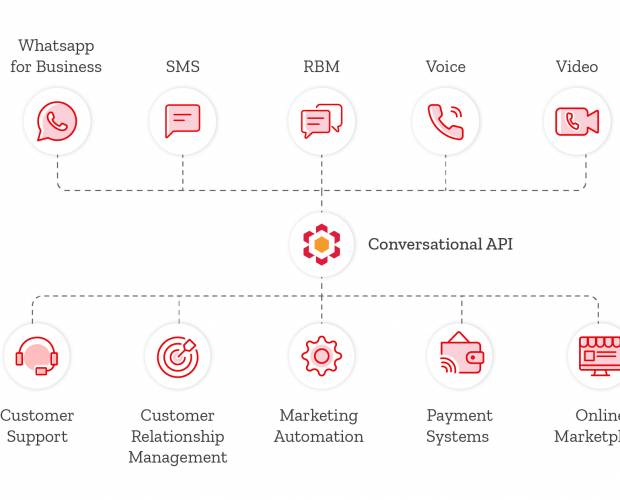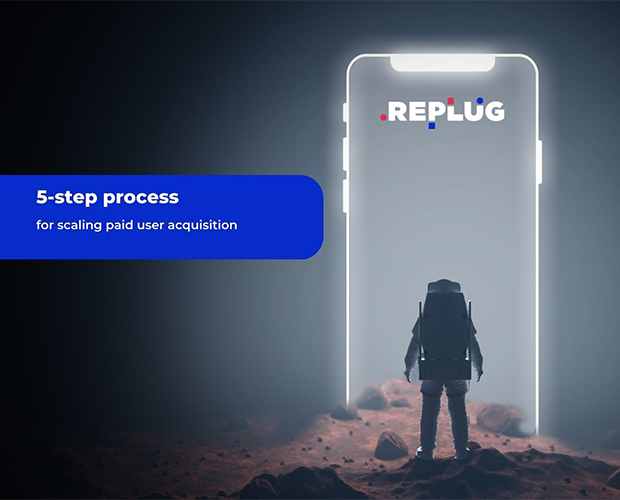How to track app marketing campaigns accurately in 2023
Lorenzo Rossi, co-founder at REPLUG, offers a comprehensive guide to accurately tracking the performance of your app marketing campaigns.
 Apple's release of iOS 14 brought significant changes to the mobile app ecosystem, particularly concerning user privacy and data tracking.
Apple's release of iOS 14 brought significant changes to the mobile app ecosystem, particularly concerning user privacy and data tracking.
One of the key updates introduced in iOS 14 was the App Tracking Transparency (ATT) framework, which mandated that app developers seek explicit user permission before tracking their data across apps and websites.
While this change was intended to enhance user privacy, it also profoundly impacted app marketing, specifically tracking paid activities. Now, we will delve into the complexity of tracking app marketing paid activities with iOS 14 and explore potential strategies to adapt to the new landscape.
Challenge of tracking app marketing paid activities
Before iOS 14, app marketers relied heavily on user data collected through various tracking mechanisms to measure the effectiveness of their marketing campaigns and optimize their strategies.
This included tracking conversions, attributing installs to specific advertisements, and measuring user engagement and retention rates. However, with iOS 14's ATT framework, users could opt out of data tracking, making it quite challenging for marketers to gather accurate and comprehensive data on their paid activities.
Some of the challenges app marketers face:
- Tracking restrictions have reduced access to data, or rather, the way we obtain it – we no longer get the quick answer we used to when uploading a banner to Facebook (for example).
- Reduced tracking accuracy. With users opting out of tracking, the accuracy of data collected through traditional methods, such as click-through rates (CTRs) and post-install events, may be compromised. This can lead to inaccuracies in attributing conversions and measuring campaign success, hindering marketers' ability to optimize the strategies effectively.
- Impact on retargeting and lookalike audiences. Retargeting and creating lookalike audiences are crucial tactics in app marketing. However, with limited access to user data, retargeting campaigns become less effective, as it becomes challenging to identify and reach engaged users precisely.
What is more, the pandemic has driven many businesses to go online. Just consider it. Your favorite family-run bakery, I'm sure, now offers items online. As a result, we're witnessing increasingly strong competition in internet advertising, particularly in mobile advertising.
We have a scenario in which small advertisers are fighting rising CPMs while large businesses are just wasting millions of dollars on marketing because they don't care about CPMs.
Adapting and making your way through constant changes in 2023
Adapting requires adjusting our approach to paid user acquisition, first by viewing it as part of a larger marketing strategy and then by following specific procedures and frameworks that can assist in overcoming data and targeting restrictions.
We've already spoken about the 5-step Paid UA Process that helped us manage paid UA activities better and analyze the results. Furthermore, we prefer to refer to it as Procework since we regard it as a hybrid of a Process and a Framework.
Our Paid UA Procework is made of five consecutive phases. For each of the five phases, we need to ask ourselves a set of questions, and a set of activities, divided by area, that we need to go through.

It’s important to note that the last three phases represent an ongoing process called the “Optimization Loop.”
Read the complete article on this topic here. And you can also watch the presentation we did back in December 2022 at the APS.
Your ultimate checklist for tracking and MMP setup
Since we circled back to our Paid UA Procework and covered the basics, we now want to emphasize how you can actually track and measure your app marketing campaigns accurately.
Tracking and attribution are two of the most important, if not the most important, aspects of app marketing. Furthermore, your ultimate aim is a data-driven growth plan, and mobile measurement and tracking is your logical celestial map.
If you can't correctly track the results, you won't be able to assess the efficacy of your budget expenditure, and, as a result, you won't be able to scale up appropriately.
Even if you have an MMP in place, you may not be tracking your app marketing efforts correctly. But where to begin?
Detailed checklist of MMP setup points
We made a complete checklist of MMP setup factors to consider. We divided the activities into six categories and outlined the questions you should ask yourself to figure out if your MMP is properly configured.
You may wonder what steps you should take with our tracking and MMP setup checklist. Don’t worry. It is effortless.
You should just check off each item on the list to ensure everything is in order before launching paid user acquisition campaigns.
The six macro areas are the following:
- General MMP Setup
- Events Tracking
- iOS 14 Tracking Capabilities
- Channel Integrations and Partners Setup
- Third-Party Tools Integrations
- Testing
Our expert consulting team worked hard on every single detail. Therefore, you will be 101 per cent sure you are on the right path!
Download it now (it’s free) - tracking and MMP setup checklist.
Conclusion
Before beginning any form of campaign, you need to ensure that your MMP has the appropriate attribution windows established, that all channels are linked to the MMP, and, most critically, that the SKAdNetwork is prepared to track your main events.
Starting your app marketing initiatives without being able to track outcomes adequately might lead to incorrect assumptions and data-driven conclusions. As a result, you are bound to make poor decisions.
Therefore, if you go through all of the steps listed in this guide, you should be able to have the correct MMP setup.
However, if you are still trying to figure out any of it, our experts are ready to help you.







